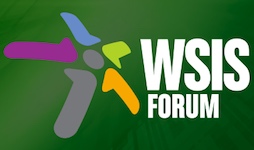Targeting SDG goal 9: Identifying development gaps to infrastructure placement and search for opportunities
12 Jun 2017 16:30h - 18:15h
Event report
[Read more session reports from WSIS Forum 2017]
This session was organised by the International Telecommunication Union (ITU). Mr Istvan Bozsoki (Head Telecommunication Network and Spectrum Management Division, ITU) moderated the session and stressed that it would be focused on the implementation of Sustainable Development Goal (SDG) 9, specifically on the aspects of infrastructure, including transportation, and information and communication technologies network resources.
Mr Kemal Huseinovic (Chief of Infrastructure, Enabling Environment and E-Applications Department, ITU) made opening remarks noting that information and communication are central to economic development. National growth depends on affordable access to the Internet, he said. The ITU has been working on interactive maps, with national and international bones, microwaves, and fibres. Broadband must reach developing countries and investments must be made in microwave, satellite, optical fibres, and databases. The challenge to provide ICT services to developing countries is still the costs.
Mr Salar Shahna (CEO, World Virtual Reality Forum) addressed the developments in virtual reality (VR) and how it can be differently used by society. Companies such as Google, YouTube, and Facebook have been investing in VR and will integrate itto their businesses. The VR market is emerging fast. In 2016, Goldman Sachs predicted that the VR market would be valued at $80 billion by 2025. VR can be provided by affordable technology, such as cardboard, has untethered high quality, and is interactive (HTC vive, Oculus and PSVR). According to Shahna, VR will be ubiquitous and used for leisure, social interaction, advertisement, education, gender equality, industry, and innovation. Windows has been working to adapt its operating system and allowing people to work in VR. Shahna concluded mentioning that VR is very data-use intensive and requires a high speed connection, good infrastructure, and broadband. For these reasons, political will is necessary to support the broad implementation of VR. Media education will be needed to teach people to distinguish between reality and VR. Compared to VR, augmented reality is still undeveloped, but it is promising to show developments very soon.
Mr Desire Kayabwite (Broadband Wireless Project, ITU) focused on the infrastructure of developing countries. He noted that in 15 years of ICT growth, fixed broadband and mobile broadband increased. By the end of 2015, global Internet penetration grew from 6.5% to 43%. In the last 5 years, hardwired and wireless Internet advanced in speed and FTTH reached 10 GBps, with LTE-A at 600 Mbs. The price of broadband became more affordable in 111 countries with mobile broadband less expensive than fixed broadband plans. The ITU Broadband Commission has been focusing on policies to implement broadband wireless to connect schools and hospitals in urban areas, but also in rural areas. In Africa, connecting schools is the key to development. Kayabwite emphasised that infrastructure must be followed by training local people to use it. ITU-BDT (Telecommunication Development Bureau) has ICT infrastructure projects which will implement broadband wireless and fixed networks in Swaziland and Burundi. The ITU team is centred on optimising traffic in these places. Low cost optical cables have been implemented to reduce costs. He concluded by affirming that new wireless networks have been implemented to fill the gaps in the infrastructure of developing countries, and 5G is coming. In addition, thin, light, and long innovative optical cables have been implemented. Public and private partnerships and project funds have offered a way to engage multistakeholders to achieve the 9th SDG goal.
Mr Vladimir Daigle (Map information and demonstration, ITU) started by explaining that Interactive Transmission Maps are an ICT-data mapping platform. Since 2013, they have taken stock of national and international backbone connectivity including optical fibres, microwave links, and satellite earth stations. The platform mapped more than 17 thousand network nodes, and 2.45 billion route kilometres of network were drawn. The maps are developed in different layers and with different kinds of information. There are maps of submarine cables, world transmission links, distance to nodes, and satellite earth stations. The future of the platform includes graphic and interactive improvements; new information (such as IXPs); new layers with ITU broadband statistics and network planning, and investment analysis with infrastructure algorithms.
Mrs Caroline Leclerc (President of Rockworld International) discussed the infrastructure gaps in the developing world. She noted that 91.6% of the world’s global population living in rural and remote areas are found in Central/Latin America, Africa, and Asia. Leclerc is concerned about the infrastructure divide between cities and rural and remote areas. Investments in ICT are concentrated in urbanised areas. This should change, and higher benchmarks should be set for connectivity, Internet access and network infrastructure. She spoke in favour of more policy leadership and a more pragmatic regulatory approach. She stated that governments should not allow the concentration of base transceiver stations (BTS) only in the capitals (like in Rwanda, Uganda, Kenya, and Burkina-Faso). Universal access should be an obligation prior to getting licensed for the operation of a public network. Regulators should incentivise the deployment of infrastructures serving rural and remoting areas. She said that public and private partnerships between government and infrastructure technology innovators are the path to achieving these goals.
Mr Karim Lakhani (CEO of Advintive) stated that his target is to provide connections for those who do not have a connection. Currently, 3.9 billion people are not using the Internet. 2.34 billion of these are located in remote and rural areas. These areas are more problematic because they are serviced by small ISPs and have smaller revenue potential. Lakhani explained that UHF band (low frequencies) is ideal for rural area connectivity, because of its low costs, high power, greater coverage, and high signal penetration. DOCSIS 3.0/3.1 Advintive Wireless fibre is the solution for fixed broadband services in remote and rural areas because it requires few towers and has already been tested in Canada with success.
by Ana Maria Corrêa
Related topics
Related event

